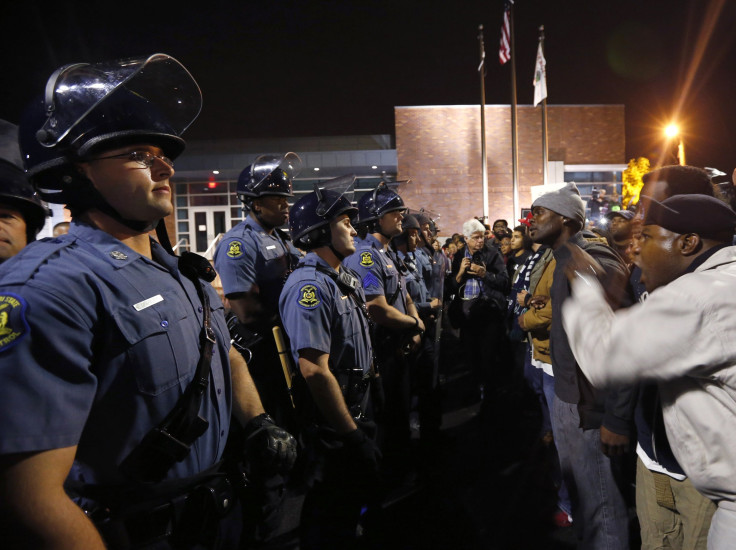Ferguson Protests: Why The US Still Has A Race Problem In Law Enforcement

Images of protesters facing off with law enforcement in the weeks after Michael Brown’s death showed a stark contrast between the people of Ferguson, Missouri, and their police force. The demonstrators were nearly all black, but the overwhelming majority of the heavily armed officers were white.
The racial divide seen in Ferguson persists across the U.S., despite integration in some corners of American law enforcement. Three-quarters of U.S. cities with populations over 50,000 have police forces that are disproportionately white compared to their populations. In more than 40 percent of U.S. cities, blacks are underrepresented in law enforcement, according to the Washington Post. The cities with the highest racial disparities between police and residents are typically smaller. Niagara Falls, New York, which has a population of just under 50,000, has an all-white police force of 250 officers, even though its population is 20 percent black. In Florissant, Missouri, near Ferguson, home to 13,000 black residents, none of the 25 police officers is black.
In general, police departments in the U.S. are far more integrated today than before the civil rights era of the 1960s, David Alan Sklansky, criminal law professor at Stanford Law School, wrote in the Journal of Criminal Law and Criminology in 2006. In Washington, D.C., more than 65 percent of police officers in 2000 were black, compared to 40 years earlier when fewer than 20 percent of the capital’s police force were people of color. In Detroit, more than six out of 10 police officers in 2000 were black, nearly 60 percent more than in the 1960s.
But progress has slowed. Public outcry has softened. And finally, “the legal climate has grown less receptive to affirmative action litigation,” which was a major impetus for diversifying police forces in the late 20th century, Sklansky told International Business Times. “That may have had a damping effect on the progress that was made.”
Discrimination lawsuits largely helped put affirmative action decrees in place, Sklansky said. In 1970, a lawsuit was brought against the Chicago Police Department challenging its discriminatory hiring practices. At the time, just 10 percent of the department’s new hires were black. The U.S. Department of Justice under Richard Nixon backed the lawsuit three years later, and in 1974, a court-mandated hiring quota was put into place. In 1975, blacks represented 40 percent of new hires. “Law enforcement appears to be a striking success story for affirmative action,” Sklansky wrote, “but a success story that remains incomplete.”
One reason the race divide persists, Sklansky said, is that some people may have misinterpreted affirmative action litigation in law enforcement as a failure, not a triumph. Just because a police force becomes integrated, does not mean its problems go away. Even diverse police departments often do not get along with the communities they serve, or engage in practices that are racially discriminatory or “objectionable,” Sklansky noted. In other words, racial diversity is not a cure for misconduct.
Other criminal law experts have pointed to problems in recruitment for why police departments lack diversity. For one, law enforcement agencies are competing with other, better-paying industries for the attention of educated minority applicants. Then there are what some say are cultural biases among black communities. Many black youth grow up suspicious of law enforcement, and that distrust often carries over into adulthood.
Brown, 18, was killed by Darren Wilson, a white police officer, on a street in Ferguson in early August. The shooting sparked protests across the country and renewed debate about excessive police force. A grand jury announced Monday it would not bring criminal charges against Wilson.
In general, experts agree that having a police force that better represents the population it serves is a good thing. “If you don’t reflect the population that you’re policing, you can quickly become an occupying army,” Gregg Etter, a professor in the department of criminal justice at the University of Central Missouri, told IBTimes in August when protests first broke out in Ferguson in the days after Brown's death. Etter said minorities are more willing to converse with minority police officers, something that is seen as key to changing law enforcement’s relationship with their communities.
© Copyright IBTimes 2024. All rights reserved.












